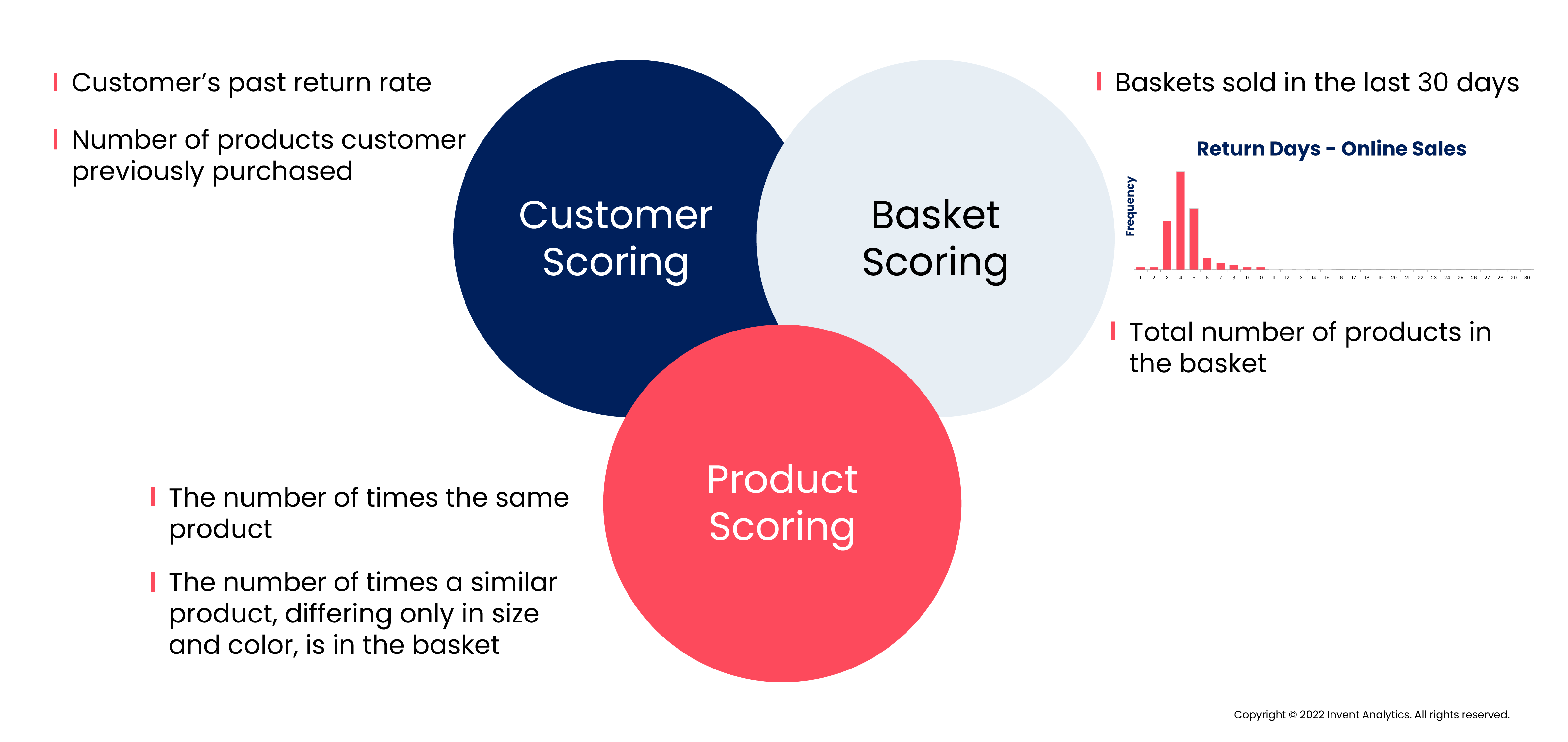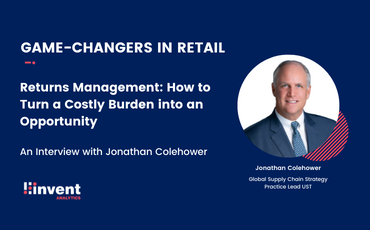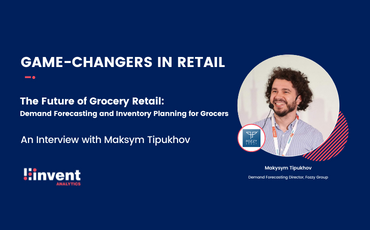
Returns Forecasting: A Must-Have for Retailers
Key Points
- Product return is a real problem in the omni-channel retail world, and retailers have no choice but to address it.
- Omni-channel shoppers love the kind of liberal return policy that makes it easy for them to buy whatever they want in-store or online with the confidence that a retailer will take products back without hassle. For the retailers, this raises some issues.
- Returns jumped to an average of 16.6% in 2021 versus 10.6% a year ago, according to National Retail Federation.
- While returns can’t be avoided completely, awareness and AI-powered return forecasting is key.
- If retailers don’t approach this problem head-on and forecast returns successfully, they have to deal with increased costs, reduced profit margins, and unhappy customers.
Table of Contents:
- Returns Are a Significant Retail Pain Point
- The Cost of Returns
- What To Do About Return Problem?
- Why Do Retailers Need Return Forecasting?
- How Can Retailers Improve Forecasting of Product Returns?
- Finding the Right Return Forecasting Solution
- How Invent Analytics Can Help Retailers Forecast Returns
- Key Takeaways
Returns Are A Significant Retail Pain Point
Retailers have always had to deal with returns. But with the explosion of e-commerce and omni-channel transactions, product returns have increased significantly, especially for soft-line and specialty retailers. As a result, they are now confronted with rising financial losses from returned merchandise and the headaches that come with figuring out what to do with all that merchandise.
While it seems like reducing returns will continue to be a hot topic, there’s a reason why retailers’ focus on robust return forecasting is crucial: returns are expensive.
The Cost of Returns
In the U.S. alone, retailers expect more than $761 billion in merchandise sold last year to be returned by consumers and this accounts for an average of 16.6 percent of total U.S. retail sales. The numbers lead to a rethinking of the return management strategies as retailers are facing bigger challenges than ever before.
The cost of processing returned items and managing the returned inventory can add up quickly. There’s no easy way to solve the return problem. Still, one thing is clear: retailers need a better way of predicting how many and which products will be returned at any given time to reduce returns’ impact on customer loyalty, avoid inventory management struggles and reduce the rising financial losses.
What To Do About Return Problem?
Even though returns are inevitable, retailers can take steps to minimize their impact on the bottom line. And embracing a data-driven approach to return forecasting is a great starting point.
-Leveraging AI and advanced analytics
We know that there are many factors influencing product returns. The estimates are highly dependent on various factors such as seasonality, weather, product mix, and promotional activities. Especially when customers can’t see, touch, or try goods before buying them, the return rates tend to be significantly higher.
So today, future-ready retailers are increasingly turning to AI and advanced analytics to power their return management. They leverage advanced analytics and machine learning algorithms that consider these factors and collect data on past returns to improve the accuracy of their return forecasts.
-Accelerating return forecasting capabilities
By implementing AI-powered forecasting solutions that rely on collecting and analyzing granular transactional receipt level sales data, retailers can empower their supply chain planning teams with the tools for successful return management.
A forecasting solution that considers historical sales, growth patterns, market trends, and external demand-driving factors such as supplier shortages and changing competitive landscape can help retailers tremendously. By accelerating return forecasting capabilities, retailers can better plan their inventory replenishment strategies and increase product availability.

Why Do Retailers Need Return Forecasting?
Today return forecasting is something that all retailers need to do, whether they are high-volume omni-channel retailers such as Amazon, Walmart, and Target or medium-sized apparel and footwear retailers.
There is no doubt that every retailer wants to be able to forecast their product return rate as accurately as possible. But forecasting product returns, or put another way, the ability to correctly anticipate how much of each product’s sales will eventually be returned by customers and when is not an easy task.
But the right return forecasting tools give planners an estimate of the timing and the quantity of future returns. Therefore, forecasting returns to a good degree of accuracy, and incorporating these forecasts in inventory optimization can be a game-changer. In addition, having ability to predict the product returns also gives information needed in other areas of the supply chain, such as production planning and logistics.
With more accurate returns forecasting, retailers can make necessary adjustments to campaigns and promotions based on the changes they expect in their customers’ behavior. In addition, they can optimize resources and budgets needed for a healthy and successful business.
How Can Retailers Improve Forecasting of Product Returns?
Retailers should consider implementing a return forecasting solution to identify why products are being returned, determine what percentage of returns can be resold, and estimate the costs associated with sending an item back to the DC or redistributing it through another channel. Using this information, retailers can make better decisions about how much replenishment stock is needed and from which channels it should come.
Finding the Right Return Forecasting Solution
The biggest challenge of a product return forecasting solution is that it needs to provide retailers with insights into what customers will want to return, when, and how much. This information can be used for:
- Advanced demand forecasting,
- Better inventory planning,
- Right size and depth of inventory,
- Minimizing markdowns and lost sales,
- Improved ability to assess customer behavior and
- Promotional planning.
How Invent Analytics Can Help Retailers Forecast Returns
Invent Analytics’ AI-powered Demand Forecasting Solution helps retailers make better return predictions and remove the guessing game.
It gathers the most granular transactional receipt or invoice level sales data for retailers and enables them to detect cannibalization and halo effects with basket analysis. It also captures historical promotion and markdown impacts more accurately, and successfully forecast product returns.
Return Probability Scoring
The machine learning algorithms use receipt-level data runs to discover the probability of the returns. The solution taking into account three main scorings, including customer, basket, and product enables retailers to have a return scoring at a transactional level.

Considering the items sold in 30 days or 90 days’ timeframes, basket profile, return scoring profile of the customer, and the likely return location, the solution helps retailers forecast the return probability of each sold product for the next few weeks.
Benefits of Using Invent Analytics’ Return Forecasting
Utilizing this data, Invent Analytics empowers retailers to predict returns at an SKU-Store-Week, SKU-DC-Week, or SKU-Region-Week level. Retailers can use these forecasts as a part of the projected incoming inventory flow for each DC/region/store alongside demand forecasts and known in-transit orders.
By leveraging machine learning algorithms on vast datasets, the solution helps uncover new insights and identifies trends that lead to better decisions.
Key Takeaways
Returns aren't only a problem for retailers; they're also an opportunity. Once empowered with the right return forecasting solution, retailers can use returns to better manage their inventory planning and provide customers with an overall better experience.
Get in touch with our team of retail experts today to see how we can help you forecast returns better and stay ahead. You can also schedule a free demo to see Invent Analytics’ Demand Forecasting Solution in action.






